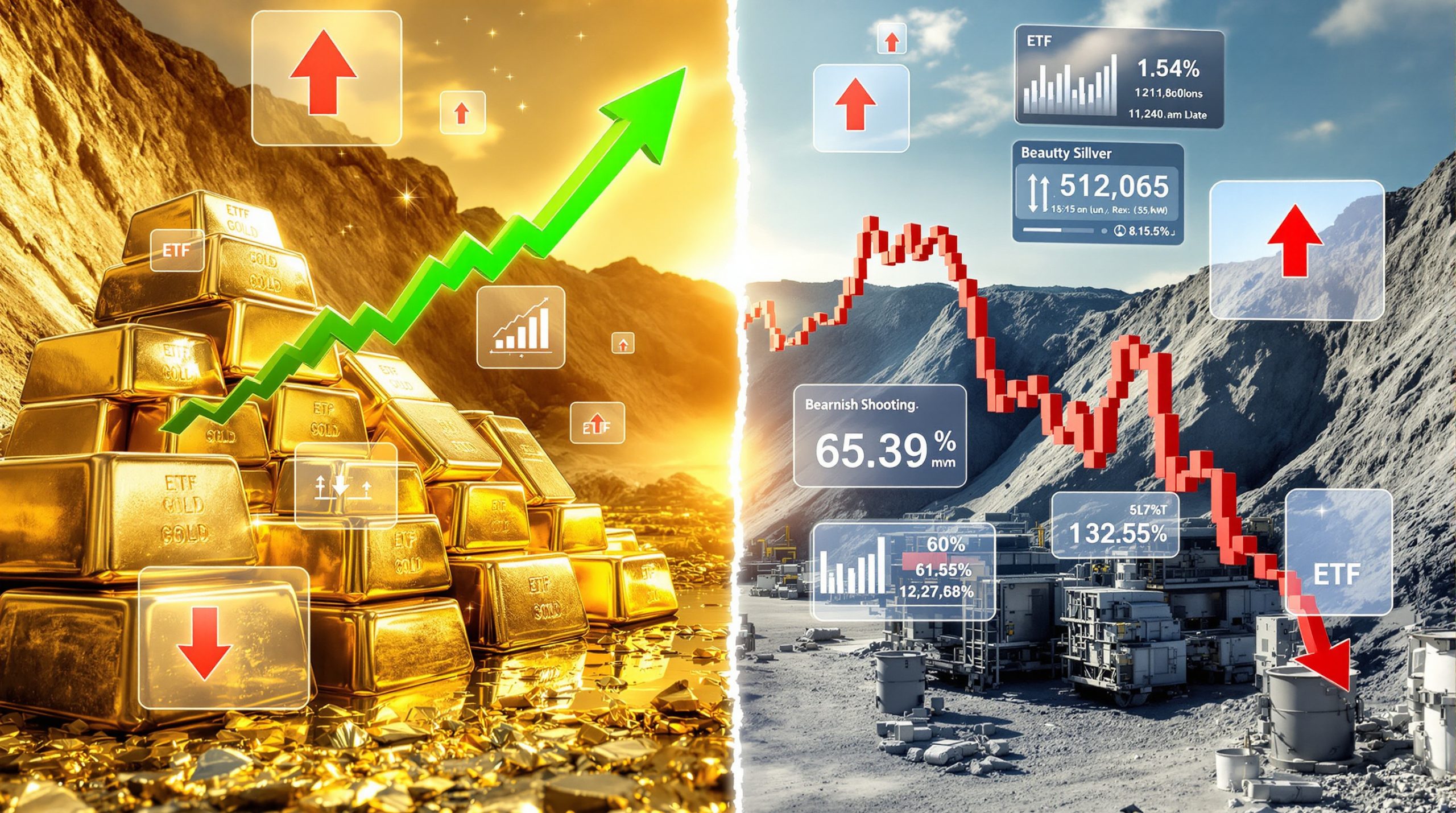Understanding the Australian Securities Exchange (ASX)
What is the Australian Securities Exchange?
The Australian Securities Exchange (ASX) stands as one of Australia's most critical financial institutions, formed through the strategic merger of the Australian Stock Exchange and Sydney Futures Exchange in 2006. Headquartered in Sydney, this powerhouse of Australian finance has established itself as a multifaceted entity functioning simultaneously as a market operator, clearing house, and payments facilitator.
With a market capitalization of AUD 2.5 trillion as of 2023, the ASX consistently ranks among the top 15 global exchanges alongside industry giants like the New York Stock Exchange (NYSE), Nasdaq, Tokyo Stock Exchange, and London Stock Exchange. The exchange hosts over 2,200 listed companies, with the resources sector comprising approximately 30% of the S&P/ASX 200 index, reflecting Australia's economic strengths.
As ASX Group CEO Helen Lofthouse noted in the 2023 Annual Report, "The ASX's merger in 2006 created a vertically integrated exchange model, enhancing Australia's financial infrastructure." This integration has allowed the ASX to provide comprehensive educational resources for investors and market participants, establishing itself as both a trading venue and knowledge hub.
History and Development of the ASX
The creation of the ASX through the merger of two major Australian financial institutions in 2006 marked a watershed moment in Australia's financial history. Since then, the exchange has undergone significant evolution, embracing electronic trading systems and modern market infrastructure to keep pace with global financial developments.
Over the years, the ASX has invested heavily in developing robust cybersecurity measures to protect the integrity of trading activities. The exchange's security protocols undergo regular independent audits, with annual cybersecurity assessments conducted by firms like KPMG ensuring the protection of Australia's financial markets.
The ASX's journey hasn't been without challenges. The 2021 blockchain-based CHESS replacement delay exemplifies the exchange's cautious approach to technological upgrades, prioritizing system integrity over speed of implementation. Despite such hurdles, the ASX has firmly established itself as a cornerstone of Australia's financial system and economy, playing a pivotal role in capital formation and economic growth.
How the ASX Works
Trading Mechanisms and Market Structure
The ASX utilizes advanced electronic trading systems to facilitate market transactions, with ASX Trade serving as its primary platform. This sophisticated system processes an average daily equity trading volume of AUD 5.2 billion (2023), with 92% of trades executed electronically. The platform's remarkable efficiency is evidenced by its order matching latency of less than 150 microseconds, placing it among the world's most responsive trading systems.
The exchange connects to leading global financial hubs through a sophisticated data center known as Hochstetter, which processes a staggering 3.2 petabytes of data daily. This connectivity ensures Australian markets remain integrated with international financial flows and maintain global competitiveness.
Following similar electronic trading trends as other major exchanges like NYSE Arca, the ASX implements circuit breakers and other market stability mechanisms to prevent extreme volatility. As noted in the Reserve Bank of Australia's Payment Systems Report, "ASX's T+2 settlement cycle balances efficiency with risk management," providing a framework that protects market integrity while enabling efficient trading.
Listing Requirements and Regulations
Companies seeking to list on the ASX must navigate specific listing requirements designed to maintain market quality and investor protection. These requirements include regular financial reporting obligations, ensuring transparency for market participants.
The exchange enforces minimum capital requirements for listing eligibility, though these are calibrated to the Australian market context. While not identical to other major exchanges (for context: NYSE requires $10 million in shareholder equity, $200 million global market capitalization, and minimum $4 share price), the ASX's requirements serve a similar purpose of ensuring listed entities have sufficient substance and stability.
In recent years, the ASX has strengthened its regulatory framework, particularly for emerging sectors like technology and resources. This adaptive approach allows the exchange to maintain market integrity while accommodating Australia's evolving economic landscape, with particular attention to the resource sector that forms a substantial portion of the market.
Market Participants and Their Roles
The ASX ecosystem encompasses diverse market participants, each fulfilling distinct functions within the market structure:
Retail investors form the backbone of individual market participation, investing personal funds across various ASX-listed securities. According to recent surveys, 72% of these investors now use mobile trading apps, reflecting the digital transformation of market access.
Institutional investors, including superannuation funds managing Australia's retirement assets, represent substantial market forces managing significant investment portfolios. These entities often drive large block trades and influence market directions through their allocation decisions.
Market makers provide essential liquidity, facilitating trade execution by standing ready to buy or sell securities. Their presence ensures markets remain liquid even during periods of stress, a crucial function for market stability.
Brokers serve as intermediaries executing trades on behalf of clients, with firms like CommSec and Interactive Brokers offering varying fee structures and service levels to different investor segments.
Regulators, particularly the Australian Securities and Investments Commission (ASIC), oversee market operations and ensure compliance with financial laws, with their market surveillance system detecting 98.7% of anomalous trades pre-execution.
ASX Market Segments and Products
Equity Markets
The ASX provides comprehensive trading platforms for Australian company shares, serving as the primary listing venue for domestic corporations seeking public capital. The exchange hosts some of Australia's largest corporations, including major resource sector players like BHP, Rio Tinto, and Fortescue Metals Group, reflecting the nation's economic strengths in mining stocks guide and resources.
The exchange offers various market indices tracking different segments of the Australian economy, with the S&P/ASX 200 serving as the benchmark index tracking the performance of the 200 largest ASX-listed companies. Other significant indices include the S&P/ASX 50 (following the fifty largest companies by market capitalization) and the S&P/ASX 300 (providing broader market coverage including mid-cap companies).
For companies entering public markets, the ASX facilitates initial public offerings (IPOs) through a structured process that balances capital raising efficiency with investor protection. The exchange's IPO pipeline has remained robust, with resource and technology sectors dominating new listings in recent years.
Derivatives and Futures Markets
The ASX offers sophisticated trading in futures, options, and other derivative products, with derivatives open interest reaching 28 million contracts in the first quarter of 2024. These instruments provide essential risk management tools for institutional and sophisticated investors navigating market uncertainties.
As noted by Macquarie Commodities Research, "ASX lithium futures have become the global benchmark for battery mineral pricing," highlighting the exchange's growing importance in pricing critical resources. This specialization reflects Australia's natural advantages in the resources sector and positions the ASX as a key venue for related financial instruments.
The derivatives market facilitates hedging strategies for managing market exposure across various asset classes, from equities to commodities. Simultaneously, it enables speculative trading opportunities for qualified market participants seeking directional exposure to price movements.
Fixed Income Securities
The ASX provides comprehensive platforms for trading government and corporate bonds, with outstanding fixed income securities totaling AUD 1.1 trillion (70% in government bonds). These debt instruments come with varying maturities and yield profiles, catering to different investor needs from short-term liquidity to long-term income.
The fixed income market facilitates capital raising for both government and corporate entities, with the 2024 Rio Tinto hybrid bond issuance (AUD 1.25 billion with a 5.8% coupon) demonstrating the market's capacity to support major corporate funding requirements. These instruments provide income-generating investment opportunities for conservative investors seeking alternatives to equity market volatility through various bond market strategies.
Technology and Innovation at the ASX
Electronic Trading Infrastructure
The ASX operates a sophisticated electronic trading platform that forms the backbone of Australia's financial markets. This infrastructure maintains a state-of-the-art data center connecting to global financial hubs through ASX Net, a dedicated fiber network that achieves impressively low latency connections (for example, just 17ms to Hong Kong Exchange).
With an impressive 99.99% system uptime, ASX Clear (the exchange's clearing house) processes over 5 million derivatives contracts daily, demonstrating both the scale and reliability of the exchange's technological infrastructure. This robust performance supports market confidence and operational stability.
The exchange implements advanced cybersecurity measures to protect market integrity, with substantial investments in defensive technologies and monitoring systems. As trading volumes and complexity continue to grow, the ASX continuously upgrades its systems to accommodate these demands while maintaining security and reliability.
Blockchain and Distributed Ledger Technology
The ASX has allocated AUD 250 million to blockchain research and development between 2022-2025, exploring blockchain applications for clearing and settlement processes. According to ASX CTO Dan Chesterman, "Our distributed ledger prototype reduces settlement risk by 40%," highlighting the potential efficiency gains from this emerging technology.
The exchange is investigating distributed ledger technology to improve market efficiency through reduced intermediation and near real-time settlement capabilities. While the 2023 failed blockchain migration provides important lessons about implementation challenges, the ASX continues researching innovative solutions for reducing transaction costs and settlement times.
This technological exploration reflects the ASX's commitment to maintaining a competitive technological advantage in global markets. The exchange recognizes that blockchain represents a potential paradigm shift in market infrastructure, potentially transforming traditional post-trade processes and creating new opportunities for mining digital innovations and market participants.
Investing Through the ASX
How to Access the ASX as an Investor
Investors looking to participate in the Australian securities market must first open an account with a licensed broker offering ASX market access. Several online trading platforms provide connectivity to the ASX, with varying features and interfaces designed for different investor types.
When selecting a broker, investors should carefully evaluate different fee structures and service offerings, as these can significantly impact long-term returns. Some platforms focus on low-cost execution, while others provide extensive research and educational resources as part of their service offering.
Understanding the trading hours and market phases of the ASX is essential for effective participation. The main trading session runs from 10:00 AM to 4:00 PM Australian Eastern Standard Time (AEST), with pre-market (7:00 AM to 10:00 AM) and post-market sessions available for certain qualified participants.
Educational Resources for Investors
The ASX offers extensive free educational materials for first-time investors, with 850,000 active users on the ASX Investor Education Portal as of 2024. These resources include tutorials and guidebooks explaining market fundamentals, helping newcomers navigate the complexities of securities investing.
A University of Sydney Finance Department study found that "ASX's simulator reduced first-time investor errors by 58%," highlighting the value of the exchange's simulation trading platforms where beginners can practice without financial risk. These educational tools received certification from the Financial Planning Association, confirming their educational integrity.
The exchange helps investors understand different asset classes and develop investment strategies appropriate to their financial goals and risk tolerance. This educational focus reflects the ASX's commitment to creating an informed investor base capable of making sound financial decisions.
Risk Management for ASX Investors
Effective investing through the ASX requires understanding the importance of diversification across different sectors and asset classes. The Australian market's heavy weighting toward resources and financial sectors makes sector allocation particularly important for managing concentration risk.
Investors must understand market volatility and implement appropriate risk controls, including position sizing and correlation analysis. Using stop-loss orders and other risk management tools can help limit downside exposure during market corrections.
Developing a long-term market strategies perspective is essential to navigate market cycles successfully. Australian markets, like all securities markets, experience periodic volatility, making emotional discipline a critical component of successful investing. The ASX's educational materials emphasize this long-term orientation as fundamental to wealth creation through securities markets.
The ASX in the Global Economy
ASX's Position Among Global Exchanges
The ASX ranks as a significant global exchange by market capitalization, serving as the primary securities exchange for the Australian economy. Its position reflects Australia's economic strength and the exchange's ability to attract both domestic and international listings.
The exchange maintains connections with other major global financial centers through technological integration and business relationships. Cross-margining agreements with international exchanges like CME Group and EUREX facilitate efficient capital utilization for global market participants operating across multiple markets.
The ASX attracts international investment into Australian markets, particularly in sectors where Australia maintains global competitive advantages. The resources sector, in particular, draws substantial foreign capital seeking exposure to Australia's mining and energy industries.
International Investment in Australian Markets
Foreign investment flows into Australian securities represent a significant market force, with AUD 45 billion in foreign inflows via ASX-listed ETFs in 2023 alone. As noted in the BlackRock Global Allocation Fund Report, "ASX's mining listings make it a proxy for global infrastructure growth," highlighting the exchange's role in providing international exposure to commodity cycles.
Global economic factors significantly affect ASX performance, with Chinese growth trends particularly influential given Australia's resource export dependence. This relationship creates both opportunities and vulnerabilities for ASX-listed companies and investors.
Currency considerations play an important role for international investors participating in ASX markets. AUD/USD volatility impacts returns for foreign investors, creating an additional risk factor that requires management. Cross-border regulatory considerations also influence overseas participants, with varying compliance requirements depending on jurisdiction and investor classification.
FAQ About the Australian Securities Exchange
What are the trading hours of the ASX?
The ASX operates its main session from 10:00 AM to 4:00 PM Australian Eastern Standard Time (AEST), with a 2-minute opening auction determining initial prices. Pre-market and post-market trading sessions are available during specific times (pre-market: 7:00 AM to 10:00 AM), offering extended opportunities for certain market participants.
Trading hours may be adjusted for holidays and special circumstances, with a modified schedule typically released annually through the ASX Trading Calendar. Different market segments may have slightly different operating hours, with derivatives markets often maintaining longer trading sessions than the cash equity market.
How does the ASX compare to other major exchanges?
The ASX features similar electronic trading infrastructure to other leading global exchanges, though with adaptations specific to the Australian market context. Its listing requirements are comparable with international standards, with adjustments reflecting the Australian economic landscape and regulatory environment.
The exchange maintains a strong focus on educational resources compared to some international counterparts, reflecting its commitment to investor development. This emphasis on education represents a distinctive aspect of the ASX's market approach.
A significant emphasis on resource sector companies reflects Australia's economic strengths in mining and commodities. This sector concentration differs from technology-heavy exchanges like Nasdaq or finance-focused venues like the London Stock Exchange.
What indices track the performance of ASX-listed companies?
The S&P/ASX 200 serves as the flagship index tracking the performance of the 200 largest ASX-listed companies. This widely-followed benchmark includes the majority of Australia's market capitalization and serves as the primary reference point for 94% of Australian equity investors.
The S&P/ASX 50 follows the fifty largest companies by market capitalization, providing a more concentrated view of Australia's corporate leaders. For broader market coverage including mid-cap companies, the S&P/ASX 300 offers a more comprehensive perspective on the market.
Industry-specific indices track sectors such as resources, financials, and technology, allowing investors to monitor performance within specific economic segments. These specialized indices facilitate sector rotation strategies and targeted exposure to different parts of the Australian economy.
How does the ASX protect investors and ensure market integrity?
The ASX implements robust regulatory frameworks and compliance requirements in partnership with the Australian Securities and Investments Commission (ASIC). This collaboration involves continuous monitoring of trading activities for suspicious patterns and market manipulation, with sophisticated surveillance systems capable of detecting anomalous trading behavior.
Strict disclosure requirements for listed companies ensure investors receive timely and accurate information necessary for informed decision-making. These continuous disclosure obligations exceed those of some international markets, reflecting Australia's strong investor protection focus.
The exchange collaborates closely with regulatory authorities to maintain market fairness and transparency. This coordination extends to cross-border regulatory relationships, ensuring international standards and best practices are incorporated into ASX market operations.
What technological innovations is the ASX implementing?
The ASX is actively exploring blockchain and distributed ledger technologies for clearing and settlement processes, with substantial research investment in this emerging area. Despite implementation challenges, the exchange continues developing these capabilities to enhance post-trade efficiency.
Cybersecurity measures receive continuous enhancement to protect market infrastructure from evolving threats. This defensive focus reflects the critical role the ASX plays in Australia's financial system and the need to maintain uninterrupted market operations.
Advanced data analytics capabilities support market surveillance and business intelligence functions. These analytical tools help identify market anomalies and support regulatory oversight while providing valuable insights to market participants.
Improved connectivity solutions continue developing for market participants, with the ASX investing in low-latency connections to global financial centers. These connections facilitate international investment flows and position the ASX as an integrated component of the global financial system.
Disclaimer: This article provides general information about the Australian securities exchange and how it works. The information presented is not financial advice and should not be relied upon for making investment decisions. Market conditions change constantly, and past performance does not guarantee future results. Readers should consult qualified financial professionals before making investment decisions based on information contained in this article.
Ready to Capitalise on the Next Major ASX Discovery?
Navigating the ASX's resource-rich market requires timely insights, which is why Discovery Alert's proprietary Discovery IQ model delivers instant notifications when significant mineral discoveries are announced, giving you a crucial edge before market movements. Discover why major mineral announcements can lead to exceptional returns by exploring our dedicated discoveries page and begin your 30-day free trial today.




